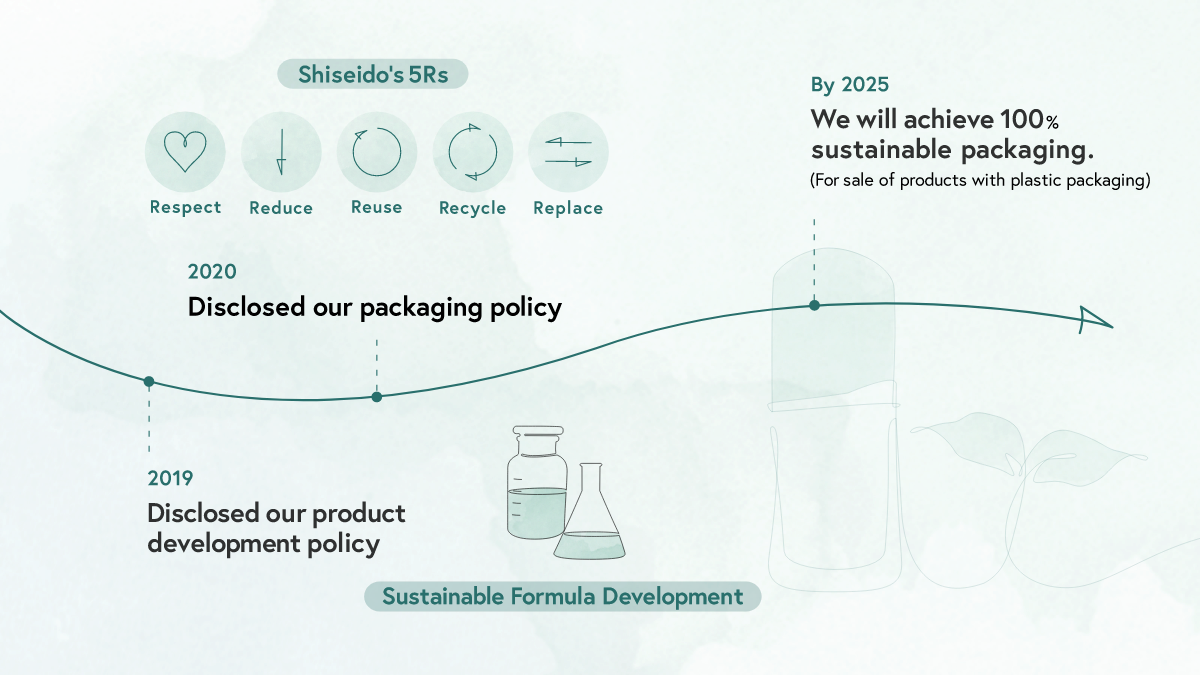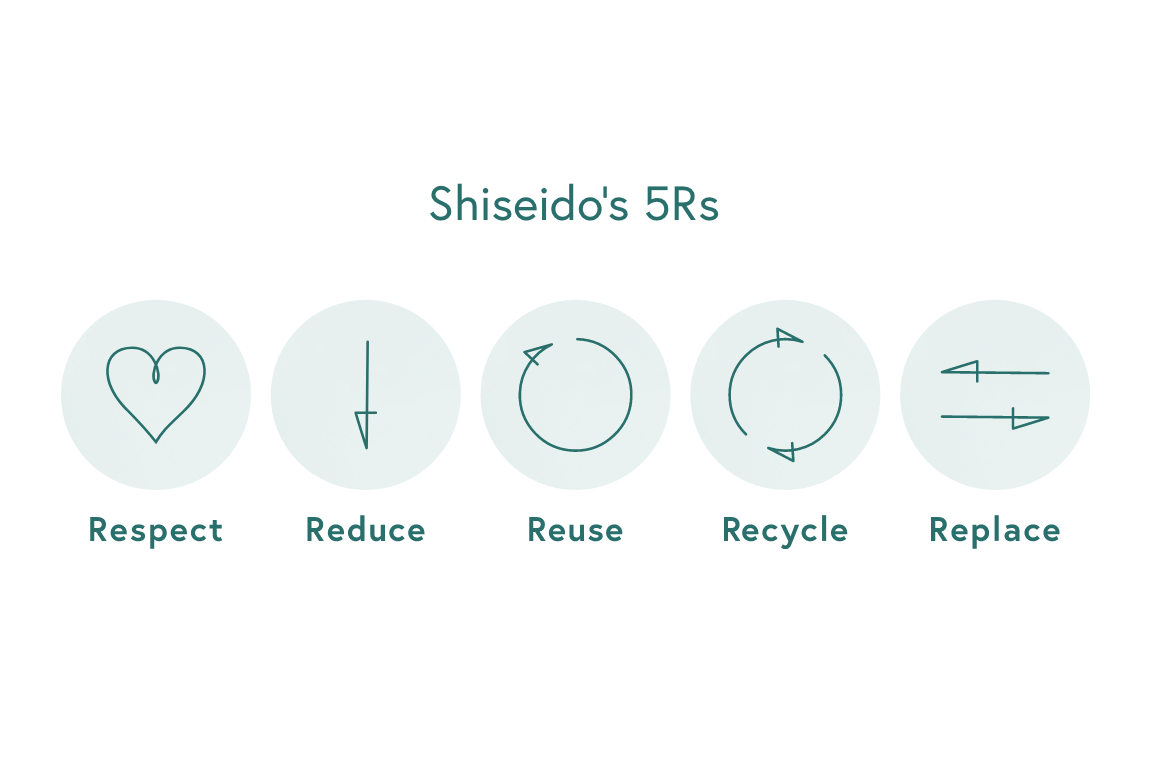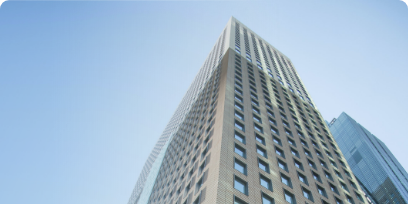Reduce/Reuse
In line with our packaging development policy, “Shiseido’s 5Rs,” we promote efforts to reduce the amount of plastic used by optimizing the size of packaging according to product, reducing the weight of packaging, and offering refillable packaging.
Refillable packaging is a solid example of how a company’s sustainability efforts can help solve environmental issues, particularly when consumers are engaged. We use fewer resources for refillable packaging than regular (primary) packaging, while repeated reuse of regular packaging leads to a reduction in the amount of plastic used. The use of refillable packaging also reduces resource input and waste, resulting in carbon footprint reduction (compared to regular packaging) based on the Life Cycle Assessment methodology.
We have introduced a wide range of refillable solutions to our skincare and makeup categories, and in 2021, we offered refillable packaging for approximately 800 stock keeping units (SKUs) under 33 brands globally. Skincare brand ELIXIR, one of our key global brands, introduced refillable packaging to the Japanese market in 2012. The brand has since promoted refills as a pillar of its sustainability activities, and the use of refills for ELIXIR lotions has resulted in an approximate 85% reduction of plastics compared with the use of regular packaging, and more than 50% carbon footprint reduction (compared to regular packaging) based on the Life Cycle Assessment methodology. In 2021, the brand also conducted a global campaign to reduce plastic waste and minimize environmental impact through the use of refillable packaging. To reduce environmental impact on a global scale, we are also developing and promoting refillable packaging outside of Japan, in China, Singapore where refills are not customary.
In 2021, as part of our reuse efforts, we joined the circular shopping platform Loop and launched a reusable product on Loop EC. We aim to contribute to a circular economy by collecting, cleaning and refilling used packaging. Furthermore, in cooperation with companies in the same industry in Japan, we began efforts to reduce the amount of plastic used at in-store point of sales by sequentially switching from plastic to paper materials.
We will continue to tackle environmental issues and offer new value through innovation, such as the development of new materials, new manufacturing processes, and new business models to establish a circular economy.
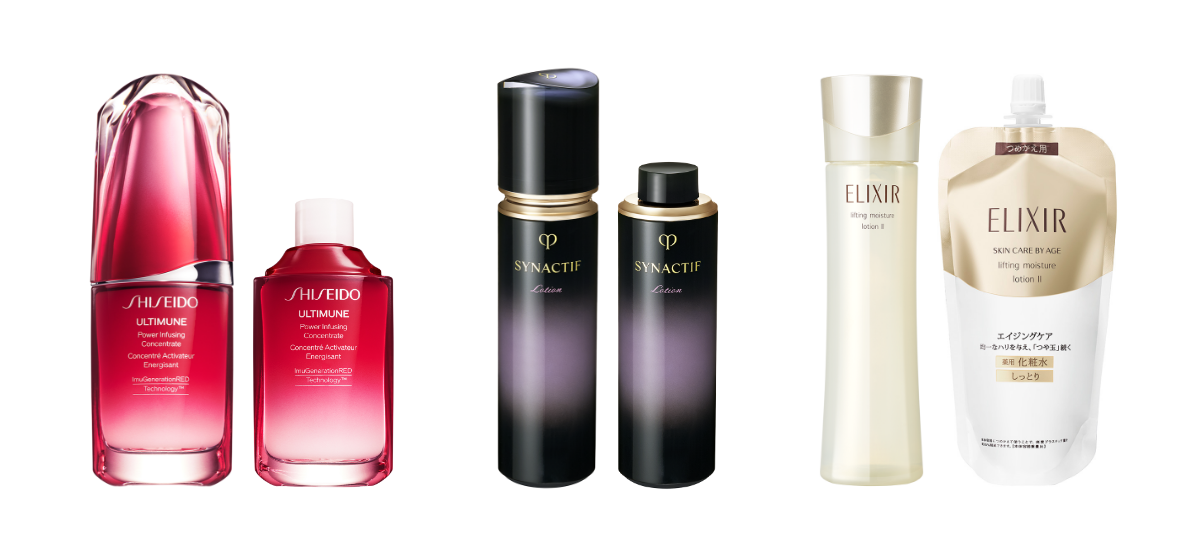
Recycle
To realize a circular economy, it is important to select materials and design products that can be recycled. In order to reduce the use of single-use plastics, we are actively developing recyclable packaging such as mono-material packaging and packaging that can be easily disassembled after use to facilitate refilling — without compromising design quality. We are promoting such packaging through major brands with high sales volumes, including SHISEIDO, Clé de Peau Beauté, and ELIXIR.
In-store Collection and Recycling
To support and promote recycling, we collect used packaging in-store and recycle it as a new resource. In 2021, skincare brand IPSA implemented a recycling program in countries/regions such as China, Hong Kong, and Taiwan to reduce environmental impact and promote environmental awareness among consumers. In China, the brand implemented the program at 95 of its stores in about six months. Over 9,000 consumers participated and more than 20,000 cosmetics containers were collected.
We work closely with consumers, waste collection companies, and other related parties within the industry. For example, in Japan, in 2021, we began working with Aeon Retail Co., Ltd. and TerraCycle Japan LLC, and other companies in our industry to collect used packaging in stores for use as a new resource.
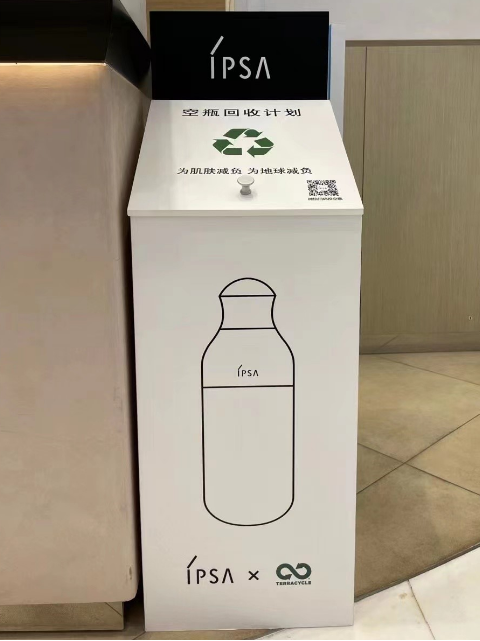
Replace
We are engaged in the development of alternative plastics, biomass-based materials with low environmental impact, and packaging that biodegrades naturally.
As part of its biodegradability initiatives, brand SHISEIDO — which operates in 88 countries and regions around the world — uses a 100% plant-derived biodegradable polymer in its packaging. The innovative new material, developed by KANEKA, is known as Green Planet. In addition, biodegradable polymer is used for the outer packaging of a new SHISEIDO sunscreen.
We are also expanding our use of biomass-based materials, which emit less CO₂ than petroleum-derived plastics. New skincare brand Aqua Label uses sugarcane-derived plastics for a portion of its packaging. This has resulted in a reduction of approximately 112.7 tons of CO₂ emissions — the equivalent to a reduction of approximately 31% compared to the use of petroleum-derived plastics.

